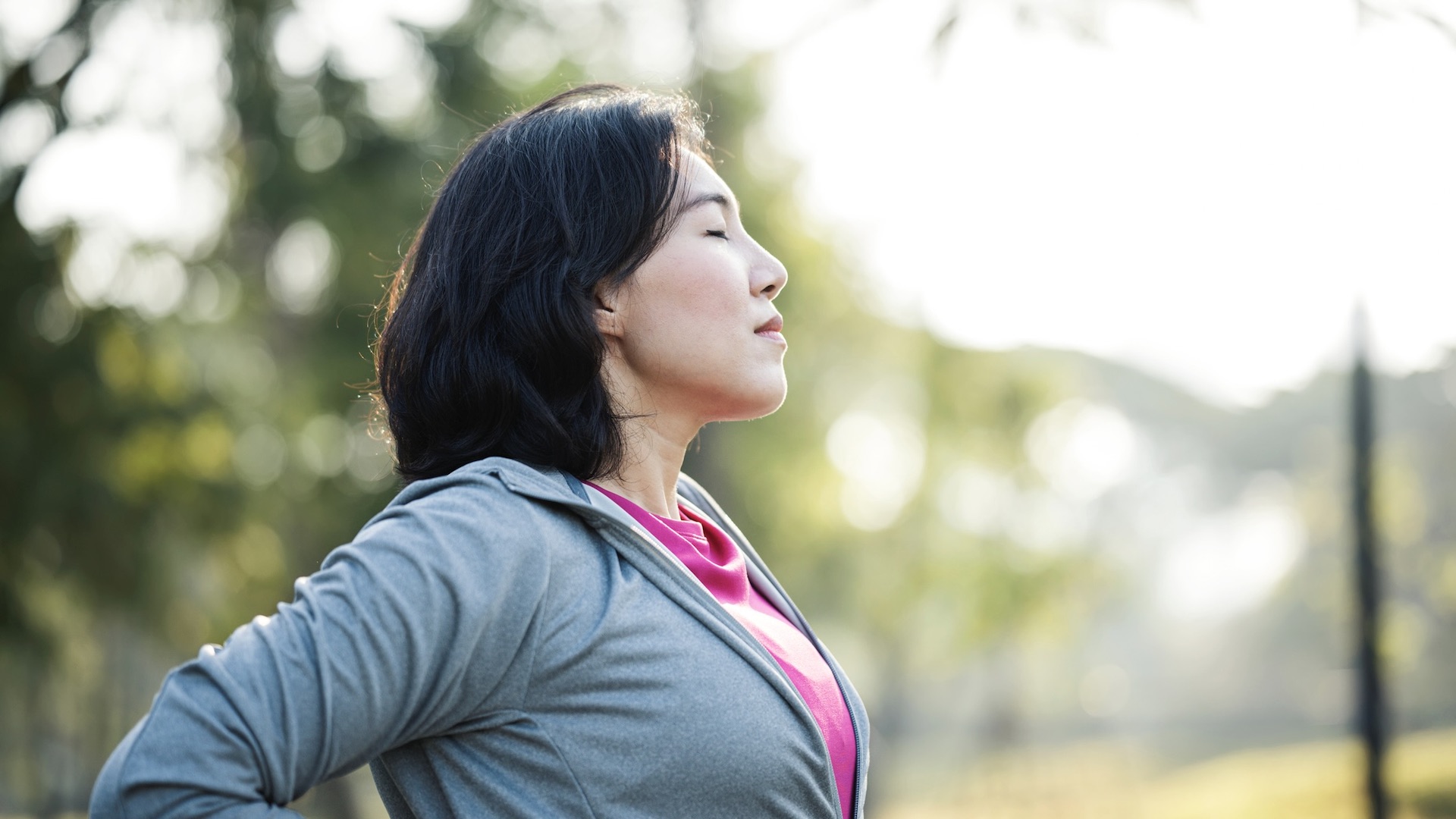Will breathing through your nose make you a better runner? We look at the science
We take a look at the research on nasal breathing for runners – and offer a guide to mastering the art

Few of us really consider how we breathe (unless we're stuffed up with a cold), but it’s suggested that paying more attention to how you breathe when you run could have benefits.
Most runners breathe through a combination of nose and mouth, but research, carried out by Colorado State University Pueblo suggests that they may be benefits from breathing through your nose predominantly while running. Another study, from researchers at the University of Colorado, showed an improvement in a 5km time trial time when nose breathing was practised by runners.
The theory is that inhaling through your nose and exhaling through your mouth may deliver more oxygen to your brain and muscles than breathing entirely through your mouth. It’s also suggested that inhaling through your nose allows the nostrils to filter allergens and add moisture to the inhaled air.
In contrast, it is suggested that breathing through your mouth can cause breathing to be shallower and more constricted, as well as leading to a dry mouth.

Claimed benefits of nose breathing for runners
The Colorado State University Pueblo study showed that nasal breathing could have several benefits for runners, including ventilatory efficiency, whereby you gain more air to the lungs, and enhanced performance and reduced fatigue.
Breathe: The new Science of a Lost Art by James Nestor reveals some further benefits of nose breathing. The first advantage is said to be that nose breathing stimulates the nervous system and this, in turn, can help to maintain your heart rate as you exercise, or run. In addition, the decrease in spikes of oxygen consumption can help to improve endurance.
Nose breathing can also reduce the potential for dehydration. Of course, you should be wary of the dangers of dehydration as a runner and follow the right tips for adequate hydration, but it could be that nose breathing makes hydrating for a run easier.
Advnture Newsletter
All the latest inspiration, tips and guides to help you plan your next Advnture!
Nose breathing can lead to an improvement in your diaphragmatic breathing and, if you increase the pressure in your abdominal cavity, it can activate the transverse abdominus muscle, which helps stabilise the lower back and pelvic floor. This can lead to a better running performance thanks to better posture and a more stable back and core.
While studies are fairly limited about the benefits of nose breathing for runners, it might be worth trying the method to see how it makes you feel during a run.
How to breathe nasally when running
Some people naturally breathe nasally while running, but most people need to practice the technique for the best effects.
To start with, you should find a place and position where you can focus on the breathing without distractions. Sit or lie down in a quiet room and place a hand over your heart and the other on your stomach.
Now close your mouth and breathe in slowly through your nose. You should also think about engaging your diaphragm (this is the muscle beneath your lungs that helps you to breathe). The hand that is on your stomach should be able to feel the diaphragm tightening when you breathe in.
Now breathe out through your mouth. When you do this you should be able to feel the diaphragm muscle relaxing.
Keep repeating this method and try to increase the length of the inhale and exhale by a few seconds each time.
If you do yoga, you may have already practiced nasal breathing.
It can take a while to properly learn the technique and to be able to naturally inhale through your noise and exhale through your mouth.
Once you have become comfortable with the technique, you can try it while going for a walk. Keep your walking pace slow and even and try to inhale for a few paces, then exhale for a few paces. It’s something you will need to work at so it becomes sub-conscious.
Once you feel comfortable breathing nasally while walking, the next step is to try the method while running.
Many runners find that when they nose breathe effectively, they do not become tired so quickly and they recover from harder efforts more easily.
- The best road running shoes: our top recommendations tested and rated

Fiona Russell is a widely published adventure journalist and blogger, better known as Fiona Outdoors. She is based in Scotland and is an all-round outdoors enthusiast with favorite activities including trail running, mountain walking, mountain biking, road cycling, triathlon and skiing (both downhill and backcountry). Aside from her own adventures, Fiona's biggest aim is to inspire others to enjoy getting outside and exploring, especially through her writing. She is also rarely seen without a running skort! Find out more at Fiona Outdoors.
